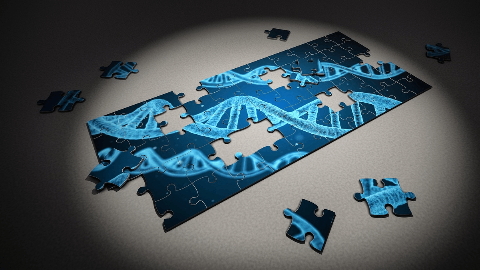预约演示
更新于:2025-05-07
SGSH
更新于:2025-05-07
基本信息
别名 HSS、MPS3A、mucopolysaccharidosis type IIIA + [7] |
简介 Catalyzes a step in lysosomal heparan sulfate degradation. |
关联
10
项与 SGSH 相关的药物靶点 |
作用机制 SGSH刺激剂 [+1] |
在研适应症 |
非在研适应症- |
最高研发阶段申请上市 |
首次获批国家/地区- |
首次获批日期1800-01-20 |
靶点 |
作用机制 SGSH刺激剂 |
在研适应症 |
非在研适应症- |
最高研发阶段临床2期 |
首次获批国家/地区- |
首次获批日期1800-01-20 |
靶点 |
作用机制 SGSH刺激剂 |
在研适应症 |
非在研适应症- |
最高研发阶段临床1/2期 |
首次获批国家/地区- |
首次获批日期1800-01-20 |
8
项与 SGSH 相关的临床试验NCT06181136
A Phase 1/2, Multicenter, Open-Label Study to Evaluate the Safety, Tolerability, Pharmacokinetics, and Pharmacodynamics of DNL126 in Pediatric Participants With Mucopolysaccharidosis Type IIIA (Sanfilippo Syndrome Type A)
This is a multicenter, open-label, Phase 1/2 study to assess the safety, tolerability, pharmacokinetics (PK), pharmacodynamics (PD) and exploratory clinical efficacy of DNL126 in participants with Sanfilippo syndrome Type A (MPS IIIA). The core study period is 25 weeks (approximately 6 months) and is followed by a 72-week (approximately 18 month) open-label extension (OLE). Participants with MPS IIIA will be enrolled in two planned cohorts, and additional participants with MPS IIIA may be enrolled in three optional cohorts.
开始日期2023-12-07 |
申办/合作机构 |
NCT06095388
Phase I/II Study of Weekly Infusions of JR-441 in Patients With Mucopolysaccharidosis Type IIIA
A Phase I/ II, open-label, randomized, 2-arm study, designed to evaluate the safety and explore efficacy of the study drug in development for the treatment of MPS IIIA patients.
开始日期2023-10-04 |
NCT04360265
A Long-term Follow-up Study of Patients With MPS IIIA From Gene Therapy Clinical Trials Involving the Administration of ABO-102 (scAAV9.U1a.hSGSH)
The main objective of this study is to evaluate the safety/tolerability and efficacy of UX111 (previously known as ABO-102) in participants with Mucopolysaccharidosis IIIA (MPS IIIA).
开始日期2020-09-28 |
100 项与 SGSH 相关的临床结果
登录后查看更多信息
100 项与 SGSH 相关的转化医学
登录后查看更多信息
0 项与 SGSH 相关的专利(医药)
登录后查看更多信息
227
项与 SGSH 相关的文献(医药)2025-04-01·Stem Cell Research
Human induced pluripotent stem cell line (PNUSCRi006-A) derived from a patient with Sanfilippo syndrome type A exhibiting a mutation in SGSH gene
Article
作者: Cheon, Chong Kun ; Noh, Haneul ; Lee, Nayeon
2025-03-01·Molecular Genetics and Metabolism Reports
Mucopolysaccharidoses types I and IIIA: Diagnosis and identification of novel polymorphisms associated with common mutations in Moroccan patients
Article
作者: Bouzid, Fadoua ; El Fissi, Houda ; Msanda, Fouad ; Serghini, Mohammed Amine ; Sebbar, Mohammed Said ; Alif, Najat
2025-01-01·Computational and Structural Biotechnology Journal
VarMeter2: An enhanced structure-based method for predicting pathogenic missense variants through Mahalanobis distance
Article
作者: Itoh, Kazuyoshi ; Aoki-Kinoshita, Kiyoko ; Togayachi, Akira ; Inamori, Kei-Ichiro ; Manabe, Noriyoshi ; Yabuki, Akane ; Inokuchi, Jin-Ichi ; Ohno, Shiho ; Nishihara, Shoko ; Angata, Kiyohiko ; Yamaguchi, Yoshiki ; Furukawa, Jun-Ichi ; Kaname, Tadashi ; Ogura, Chika
34
项与 SGSH 相关的新闻(医药)2025-01-20
·药明康德
▎药明康德内容团队编辑
近日,美国FDA药物评价和研究中心(CDER)发布了2024年度的新药获批报告。FDA旗下CDER在2024年共计批准50款创新疗法,超过过去10年的平均水平(47款)。其中,用于治疗罕见疾病和罕见癌症的新药占比超过50%,展现了FDA致力于解决罕见病相关未竟医疗需求方面的努力。在今天的文章中,药明康德内容团队将结合公开资料,回顾2024年FDA批准疗法的亮点,并展望2025年有望获批的潜在“first-in-class”疗法。
▲2015-2024年CDER批准的创新药物数量(图片来源:参考资料[1])
从创新角度来看,CDER在2024年批准的50款新药中,24款被认定为“first-in-class”新药。这些新药采用了与已有疗法不同的作用机制。FDA的报告中着重介绍了下面几款“first-in-class”创新药物。
Anktiva(nogapendekin alfa inbakicept)是一款白细胞介素-15(IL-15)超级激动剂。它获得批准与卡介苗(BCG)联合使用,用于治疗对BCG无应答且伴有原位癌(CIS)的非肌层浸润性膀胱癌(NMIBC)成年患者,这些患者伴或不伴有乳头状肿瘤。在2/3期临床试验中,接受治疗的患者完全缓解率达62%。
Cobenfy(xanomeline和trospium chloride)获得FDA批准治疗精神分裂症成人患者。它是靶向胆碱能受体的首个抗精神病药物(antipsychotic drug),长期以来精神分裂症的标准疗法靶向多巴胺受体。该疗法也标志着过去数十年来首个治疗精神分裂症的新机制药物。
Nemluvio(nemolizumab)是一款靶向白介素-31(IL-31)受体的单克隆抗体,获得FDA批准用于成人结节性痒疹(prurigo nodularis)患者。它是首款获得FDA批准用以抑制IL-31信号的单克隆抗体。
Revuforj(revumenib)是一种针对menin-KMT2A相互作用的强效、选择性小分子抑制剂。它获得FDA批准治疗携带KMT2A易位的复发或难治性(R/R)急性白血病成人和1岁以上儿童患者。Revuforj是首款获批的menin抑制剂。
Rezdiffra(resmetirom)是一款每日一次、口服甲状腺激素受体(THR)-β选择性激动剂,获得FDA加速批准治疗患有中重度肝纤维化(F2至F3期)的非肝硬化非酒精性脂肪性肝炎(NASH)/代谢功能障碍相关脂肪性肝炎(MASH)成人患者。这是获得FDA批准的首款NASH疗法,标志着该领域的一项重要里程碑。
Tryvio(aprocitentan)是一款靶向双重内皮素(endothelin)受体的口服拮抗剂。它获得批准与其他抗高血压药物联合,用以治疗使用其他药物无法充分控制血压的成年高血压患者。这款药物是30年来首个获批基于新机制的降血压药物。
FDA加速罕见病药物的开发与审评
2024年,CDER批准的50款新药中有26款(52%)获得孤儿药资格,这些药物专门针对罕见疾病——即患者总数不足20万人的疾病。对于这些罕见疾病患者来说,他们通常面临着极其有限或完全缺乏有效治疗选择的困境。
▲2024年CDER批准的获得孤儿药资格的罕见病疗法(数据来源:公开资料,药明康德内容团队制图)
FDA采用多种方式促进和加快新药审评
在2024年,CDER采用了多种监管策略来加快药品的审评流程。在2024年获批的50款新药中,有22款(44%)获得快速通道资格,18款(36%)获得突破性疗法认定,28款(56%)获得优先审评资格(不包括使用优先审评券递交监管申请的药物),7款药物(14%)获得加速批准,33种新药(66%)使用了一个或多个加快审评过程的资格认定。
加速批准旨在以比传统审评路径更快的速度,推动解决未满足医疗需求的某些药物上市。对于符合加速批准路径的药物,其安全性和有效性评估将不基于直接临床获益的指标,而是基于可能预测临床获益的替代终点或中间临床终点。2024年,CDER利用这一渠道批准了7款创新药。
▲2024年CDER加速批准的创新药(数据来源:公开资料,药明康德内容团队制图)
2025年,哪些潜在“first-in-class”疗法值得期待?
疗法:Donidalorsen
公司:Ionis Pharmaceuticals
目标适应症:遗传性血管性水肿
Donidalorsen是一款反义寡核苷酸配体偶联(LICA)药物,旨在精确沉默前激肽释放酶(PKK)的表达,中断导致遗传性血管性水肿(HAE)发作的信号通路。在3期临床试验OASIS-HAE中,接受每四周一次donidalorsen(80毫克)治疗的患者与安慰剂相比,在第1至第25周内将患者月均HAE发作率降低81%(p<0.001)。
疗法:Fitusiran
公司:赛诺菲,Alnylam Pharmaceuticals
目标适应症:血友病A和血友病B
Fitusiran是一款RNAi疗法,旨在作为体内产生/未产生凝血因子抑制物的血友病A或血友病B患者的预防性治疗。Fitusiran可降低抗凝血酶水平,从而促进凝血酶生成,重新平衡止血功能并预防出血。在两项3期临床研究中,与对照组相比,每月一次皮下注射fitusiran预防治疗组患者的年化出血率降低了90%。
疗法:Mirdametinib
公司:SpringWorks Therapeutics
目标适应症:神经纤维瘤病1型相关的丛状神经纤维瘤
Mirdametinib是一种口服别构小分子MEK抑制剂,靶向MEK1和MEK2。美国FDA已接受SpringWorks递交的新药申请并授予其优先审评资格。关键性2b期临床试验ReNeu数据显示,接受mirdametinib治疗的儿童患者客观缓解率为52%,成人患者为41%。ReNeu试验中的儿童和成人患者的疼痛、生活质量和身体功能较基线有统计学上显著的改善。
疗法:Plozasiran
公司:Arrowhead Pharmaceuticals
目标适应症:家族性乳糜微粒血症综合征
Plozasiran是一款靶向APOC3基因的潜在“first-in-class”RNAi疗法。APOC3是富含甘油三酯脂蛋白(TRL)的组成部分,也是甘油三酯代谢的关键调节因子。APOC3通过抑制脂蛋白脂肪酶分解TRL以及肝脏受体吸收TRL残留物来增加血液中的甘油三酯水平。Plozasiran治疗目标是通过下调APOC3降低甘油三酯水平。Arrowhead Pharmaceuticals日前宣布,FDA已接受为plozasiran递交的新药申请,用于治疗家族性乳糜微粒血症综合征。
疗法:Suzetrigine
公司:Vertex Pharmaceuticals
目标适应症:中重度急性疼痛
Suzetrigine是一种口服选择性NaV1.8抑制剂,与其它NaV离子通道相比,它对NaV1.8具有高度选择性。NaV1.8是在外周神经系统的痛觉信号传导中起到关键性作用的电压门控钠通道。它是经过遗传学验证的疼痛治疗靶点。Vertex的策略是通过选择性抑制NaV1.8,开发新的药物类型。与阿片类药物相比,它们可能在提供更好镇痛效果的同时,避免上瘾等副作用。2024年7月,美国FDA接受了Vertex为该疗法递交的NDA,并授予其优先审评资格,预计在2025年1月30日之前完成审评。
疗法:Telisotuzumab vedotin
公司:艾伯维
目标适应症:c-Met蛋白过度表达的经治局部晚期或转移性非鳞状非小细胞肺癌(NSCLC)
Telisotuzumab vedotin是一款靶向c-Met的抗体偶联药物,以微管蛋白抑制剂MMAE作为毒性有效载荷。艾伯维已经向美国FDA提交了telisotuzumab vedotin的生物制品许可申请,寻求加速批准,用于治疗c-Met蛋白过度表达的经治局部晚期或转移性非鳞状NSCLC成人患者,这些患者肿瘤的表皮生长因子受体(EGFR)为野生型。此前公布的2期临床试验数据显示,肿瘤c-Met高度表达和中度表达患者的总缓解率分别为35%和23%。
疗法:UGN-102
公司:UroGen Pharma
目标适应症:低级别中等风险非肌层浸润性膀胱癌
UGN-102膀胱灌注液是一种创新的丝裂霉素(mitomycin)药物。该疗法利用UroGen专有的RTGel技术,这种基于水凝胶的持续释放制剂可使膀胱组织能够更长时间地暴露于丝裂霉素之下,从而通过非手术手段治疗肿瘤。在3期临床试验中,接受UGN-102治疗患者在首次灌注后三个月的完全缓解率为79.6%(95% CI:73.9-84.5)。FDA预计在今年6月13日之前公布审评结果。
疗法:UX111
公司:Ultragenyx Pharmaceutical
目标适应症:IIIA型黏多糖贮积症
UX111是一种用于治疗IIIA型黏多糖贮积症的新型体内基因疗法。它旨在通过一次性静脉输注完成给药,使用AAV9载体将表达N-磺基葡萄糖胺磺基水解酶(SGSH)的转基因递送至细胞中。Ultragenyx Pharmaceutical公司已向美国FDA提交了生物制品许可申请,寻求加速批准UX111。关键性Transpher A研究的数据显示,接受UX111治疗后,患者脑脊液中的硫酸乙酰肝素(HS)水平迅速且持续降低,且这一生物标志物的持续降低与长期认知发育的改善相关。
除了上述内容,CDER的报告还详细概述了2024年关于新药批准的PDUFA目标日期的准时达成情况、药物适用范围的扩展批准,以及对生物类似药的审评情况。欲了解更多详情,可点击文末“阅读全文/Read more”下载报告全文。
展望2025年,我们期待更多创新疗法的批准,为全球患者带来新的治疗选择。
▲欲了解更多前沿技术在生物医药产业中的应用,请长按扫描上方二维码,即可访问“药明直播间”,观看相关话题的直播讨论与精彩回放
参考资料:
[1] Advancing Health Through Innovation: New Drug Therapy Approvals 2024. Retrieved January 20, 2025, from https://www.fda.gov/media/184967/download?attachment
[2] Ten first-in-class drugs on track for FDA approval in 2025. Retrieved January 20, 2025, from https://www.labiotech.eu/best-biotech/first-in-class-drugs-to-watch-2025/
免责声明:药明康德内容团队专注介绍全球生物医药健康研究进展。本文仅作信息交流之目的,文中观点不代表药明康德立场,亦不代表药明康德支持或反对文中观点。本文也不是治疗方案推荐。如需获得治疗方案指导,请前往正规医院就诊。
版权说明:本文来自药明康德内容团队,欢迎个人转发至朋友圈,谢绝媒体或机构未经授权以任何形式转载至其他平台。转载授权请在「药明康德」微信公众号回复“转载”,获取转载须知。
分享,点赞,在看,聚焦全球生物医药健康创新
加速审批
2024-12-26
Dec. 19, 2024 -- Ultragenyx Pharmaceutical Inc. (NASDAQ: RARE) today announced the submission of a Biologics License Application (BLA) to the U.S. Food and Drug Administration (FDA or the Agency) seeking accelerated approval for UX111 (ABO-102) AAV gene therapy as a treatment for patients with Sanfilippo syndrome type A (MPS IIIA).
“The path to get a treatment to the point of a BLA filing has been long and perilous for the Sanfilippo community. They have had to watch their children, once thriving, lose their ability to speak and walk, and eventually die, while research programs were shelved due to regulatory and funding hurdles,” said Emil D. Kakkis, M.D., Ph.D., chief executive officer and president of Ultragenyx. “We commend the FDA’s detailed evaluation and acceptance of cerebral spinal fluid (CSF) heparan sulfate (HS) as a well-characterized biomarker to support an accelerated approval pathway for mucopolysaccharidoses (MPS) disorders, including Sanfilippo syndrome. The FDA’s acceptance of CSF HS, which we define as a disease-cause biomarker since it measures the underlying disease, enabled us to file our BLA and may unlock the future accelerated approvals of a host of new therapies for these devastating MPS diseases that affect the brain.”
Earlier this year, Ultragenyx reached agreement with the Agency that CSF HS can be used as a surrogate endpoint for accelerated approval based on the body of data presented by the company, along with a consortium of academics and other industry sponsors at a workshop hosted by the Reagan-Udall Foundation for the FDA in February 2024.
The BLA submission for UX111 is supported by available data, including from the ongoing pivotal Transpher A study, demonstrating treatment with UX111 resulted in rapid and sustained decreased levels of HS in CSF in patients with Sanfilippo syndrome type A, and that sustained reduction in CSF HS exposure over time was correlated with improved long-term cognitive development compared to the decline observed during the same period of time in natural history data. The most frequently reported treatment-related adverse events to date were elevations in liver enzymes, and the majority of these events were mild (Grade 1) or moderate (Grade 2) in severity and all resolved.
UX111 is a novel in vivo gene therapy in Phase 1/2/3 development for Sanfilippo syndrome type A (MPS IIIA), a rare fatal lysosomal storage disease with no approved treatment that primarily affects the brain. UX111 is designed to be dosed in a one-time intravenous infusion using a self-complementary AAV9 vector to deliver a functional copy of the SGSH gene to cells. The therapy is designed to address the underlying SGSH enzyme deficiency responsible for abnormal accumulation of heparan sulfate, a glycosaminoglycan, in the brain that results in progressive cell damage and neurodegeneration. The UX111 program has received Regenerative Medicine Advanced Therapy, Fast Track, Rare Pediatric Disease, and Orphan Drug designations in the U.S., and PRIME and Orphan medicinal product designations in the EU.
Sanfilippo syndrome type A (MPS IIIA) is a rare, fatal lysosomal storage disease with no approved treatment that primarily affects the brain and is characterized by rapid neurodegeneration, with onset in early childhood. Children with MPS IIIA present with global developmental delay which eventually leads to progressive language and cognitive decline, behavioral abnormalities and early death. MPS IIIA is estimated to affect approximately 3,000 to 5,000 patients in commercially accessible geographies with a median life expectancy of 15 years. MPS IIIA is caused by biallelic pathogenic variants in the SGSH gene that lead to a deficiency in the sulfamidase (SGSH) enzyme responsible for breaking down heparan sulfate, a glycosaminoglycans, which accumulate in cells throughout the body resulting in the observed rapid neurodegeneration that is associated with the disorder.
Ultragenyx is a biopharmaceutical company committed to bringing novel therapies to patients for the treatment of serious rare and ultrarare genetic diseases. The company has built a diverse portfolio of approved medicines and treatment candidates aimed at addressing diseases with high unmet medical need and clear biology, for which there are typically no approved therapies treating the underlying disease.
The company is led by a management team experienced in the development and commercialization of rare disease therapeutics. Ultragenyx’s strategy is predicated upon time- and cost-efficient drug development, with the goal of delivering safe and effective therapies to patients with the utmost urgency.
The content above comes from the network. if any infringement, please contact us to modify.

孤儿药快速通道基因疗法
2024-12-19
·药明康德
▎药明康德内容团队编辑
Ultragenyx
Pharmaceutical公司今日宣布,已向美国FDA提交了生物制品许可申请(BLA),寻求加速批准其AAV基因疗法UX111(ABO-102),用于治疗IIIA型黏多糖贮积症(MPS IIIA)患者。今年早些时候,Ultragenyx与FDA达成协议,认为脑脊液(CSF)中的硫酸乙酰肝素(HS)是一个合理的替代终点,可用以支持UX111的加速批准。根据新闻稿,如果获得批准,UX111将成为获美国FDA批准用以治疗MPS IIIA的首款疗法。
MPS IIIA是一种常染色体隐性遗传病,由编码N-磺基葡萄糖胺磺基水解酶(SGSH)的基因发生突变所引起。SGSH酶可分解并回收HS。HS调控着一系列重要的生理过程,但是当编码SGSH的基因发生突变而导致酶失活时,HS会在器官中积聚并破坏器官的正常功能,特别是造成中枢神经系统的功能损伤,患者可能出现发育迟缓、行为障碍、癫痫发作等认知或生理异常状况。
UX111的BLA提交的数据包括来自进行中的关键性Transpher
A研究的数据。研究显示,接受UX111治疗后,患者的CSF HS水平迅速且持续降低,且CSF HS的持续降低与长期认知发育的改善相关,相较于自然病程数据中观察到的认知能力下降,治疗效果显著。迄今为止,最常见的治疗相关不良事件是肝酶升高,其中大多数事件为轻度(1级)或中度(2级)且均已恢复。
UX111是一种用于治疗MPS
IIIA的新型体内基因疗法,目前处于1/2/3期开发阶段。UX111旨在通过一次性静脉输注完成给药,使用AAV9载体将功能性SGSH基因递送至细胞中。该疗法的设计目的是解决SGSH酶缺乏这一根本问题,该缺陷会导致脑内糖胺聚糖(如硫酸乙酰肝素)的异常积累,从而引发进行性细胞损伤和神经退行性病变。UX111已获美国FDA授予再生医学先进疗法(RMAT)认定、快速通道资格、罕见儿科疾病认定和孤儿药资格,并在欧盟获得PRIME资格和孤儿药资格。
▲欲了解更多前沿技术在生物医药产业中的应用,请长按扫描上方二维码,即可访问“药明直播间”,观看相关话题的直播讨论与精彩回放
参考资料:
[1] Ultragenyx Submits Biologics License Application to the U.S. FDA for
UX111 AAV Gene Therapy for the Treatment of Sanfilippo Syndrome Type A (MPS
IIIA). Retrieved December 19, 2024 from https://www.globenewswire.com/news-release/2024/12/19/2999800/20739/en/Ultragenyx-Submits-Biologics-License-Application-to-the-U-S-FDA-for-UX111-AAV-Gene-Therapy-for-the-Treatment-of-Sanfilippo-Syndrome-Type-A-MPS-IIIA.html
免责声明:药明康德内容团队专注介绍全球生物医药健康研究进展。本文仅作信息交流之目的,文中观点不代表药明康德立场,亦不代表药明康德支持或反对文中观点。本文也不是治疗方案推荐。如需获得治疗方案指导,请前往正规医院就诊。
版权说明:本文来自药明康德内容团队,欢迎个人转发至朋友圈,谢绝媒体或机构未经授权以任何形式转载至其他平台。转载授权请在「药明康德」微信公众号回复“转载”,获取转载须知。
分享,点赞,在看,聚焦全球生物医药健康创新
基因疗法孤儿药快速通道引进/卖出
分析
对领域进行一次全面的分析。
登录
或

生物医药百科问答
全新生物医药AI Agent 覆盖科研全链路,让突破性发现快人一步
立即开始免费试用!
智慧芽新药情报库是智慧芽专为生命科学人士构建的基于AI的创新药情报平台,助您全方位提升您的研发与决策效率。
立即开始数据试用!
智慧芽新药库数据也通过智慧芽数据服务平台,以API或者数据包形式对外开放,助您更加充分利用智慧芽新药情报信息。
生物序列数据库
生物药研发创新
免费使用
化学结构数据库
小分子化药研发创新
免费使用







